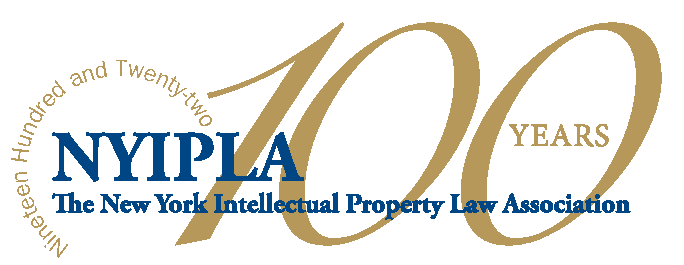NYIPLA Urges the Supreme Court to Clarify Mayo in Sequenom, Inc. v. Ariosa Diagnostics, Inc.
Dorothy Auth, President of the NYIPLA, as well as Irena Royzman, Clint Morrison, Robert Rando, Melvin Garner, Charles Miller, and Ksenia Takhistova were authors on the brief. Charles R. Macedo and Irena Royzman are Co-Chairs of NYIPLA’s Amicus Briefs Committee and Robert Isackson is the NYIPLA Board Liaison.
(April 19, 2016) On Tuesday, April 19, 2016, the New York Intellectual Property Law Association (“NYIPLA”) filed an amicus brief in support of a petition for a writ of certiorari by Sequenom, Inc. on the issue of patent eligibility in Sequenom, Inc. v. Ariosa Diagnostics, Inc., No. 15-1182. The Federal Circuit held that Sequenom’s claims to a process for prenatal diagnosis of certain fetal genetic conditions by amplifying and detecting paternally inherited genetic sequences from cell-free fetal DNA (cffDNA) circulating in pregnant women’s plasma were not patent eligible. The panel agreed that Sequenom’s diagnostic methods “revolutionized prenatal care” but nonetheless invalidated Sequenom’s claims based on its interpretation of the Supreme Court’s decision in Mayo. After applying the Mayo two-part test, the panel declared any preemption inquiry to be “fully addressed and made moot” even though there was no monopolization of cffDNA on the facts of the case. The Federal Circuit also interpreted the two-part test to require divorcing cffDNA from the rest of the claims and found the remaining steps of the claims to be routine and conventional on their own although it was undisputed that no one was amplifying and detecting paternally inherited cffDNA prior to Sequenom’s invention.
In the amicus brief, the NYIPLA asks the Supreme Court to “to clarify that the Mayo two-part test does not moot a preemption analysis and that inventions posing no preemption concerns remain patent eligible under Mayo.” The NYIPLA explains that the Supreme Court “has long recognized that preemption concerns are central to a patent eligibility analysis” and that the purpose of the Mayo test is to “assist courts in distinguishing patents that claim laws of nature, natural phenomena, and abstract ideas from those that do not improperly monopolize such concepts.” The NYIPLA argues that the Federal Circuit “missed the forest for the trees” in holding that the Mayo two-part test supplanted the need for a preemption inquiry.
The NYIPLA’s brief explains that the Federal Circuit’s “wooden application of Mayo (much like the machine-or-transformation test, Freeman-Walter-Abele and technological arts tests that had been applied in the past) ignores the goal of the inquiry—to determine if the claim avoids preempting the patent-ineligible concept in question.” The NYIPLA argues that “[t]he absence of a preemption concern [in this case], unlike in Mayo and Alice, should have conclusively confirmed patent eligibility,” and that the Supreme Court’s “intervention is critically important to clarify that while preemption may signal patent ineligible subject matter, the absence of preemption is a reliable and conclusive indicator of patent eligibility.”
The NYIPLA also urges the Supreme Court to clarity that “claims must be considered as a whole in a patent eligibility analysis and that Mayo does not require divorcing the natural principle from the rest of the claim.” The NYIPLA explains that although Mayo did not change the general rule that claims must be considered as a whole, “the Federal Circuit does not read or apply Mayo in this way (and the PTO and district courts have necessarily followed suit) turning th[e] Court’s general and well-established rule on its head and casting a cloud over inventions that would otherwise unquestionably have been considered patent eligible under th[e] Court’s precedents.”
The NYIPLA emphasizes that this case is an ideal vehicle for the Supreme Court to clarify that its test in Mayo should not be interpreted rigidly. First, there is no preemption on the facts of the case. Second, it is undisputed that the claims, when considered as a whole, recite innovative and practical uses that are novel and unforeseen. Finally, it is clear that the “Federal Circuit’s application of Mayo has caused a crisis of patent law and medical innovation” and that the Federal Circuit believes it has no recourse – without the Supreme Court’s intervention – to apply Mayo differently than it has.
A copy of the NYIPLA's Amicus Brief can be found here
